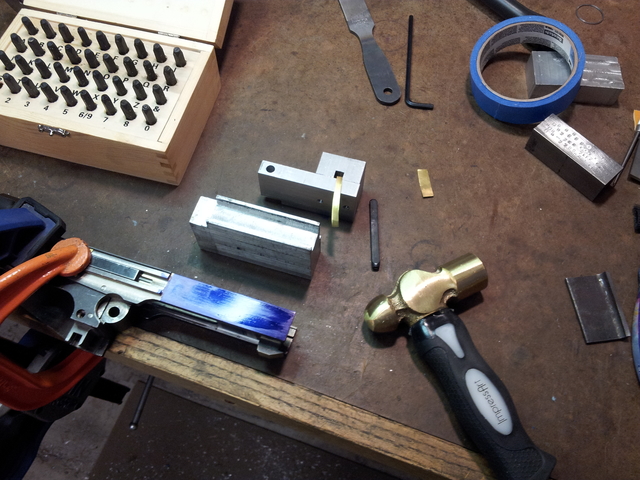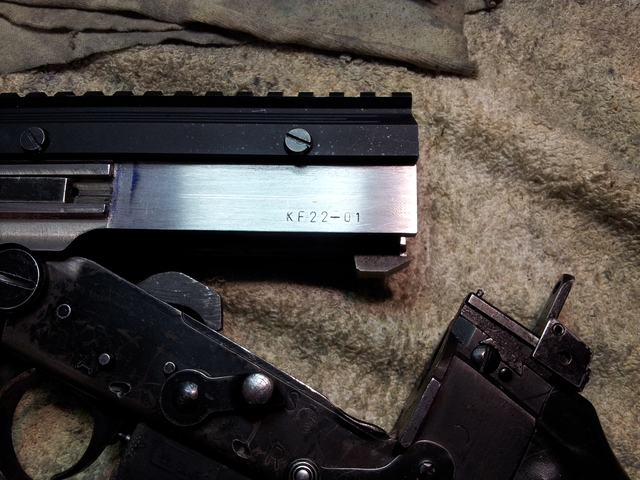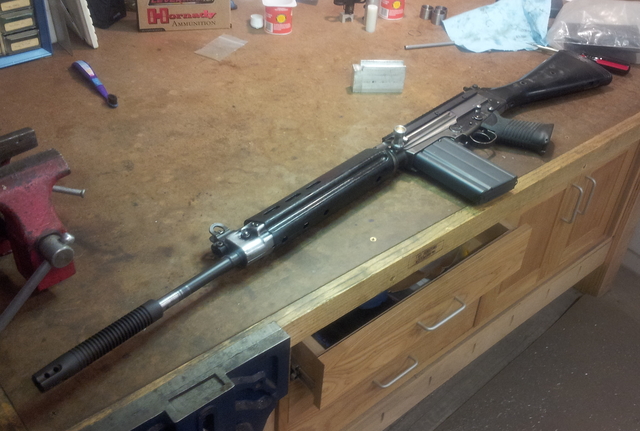Casting Recap
Barrel Alignment
Barrel Exterior
But Weight, There's More
Barrel Liner
Completion and Test Fire
Problem 1: Jamming
Problem 2: Sight Alignment
Problem 3: Unscrewing Barrel
Finishing Up
Conclusion
Appendix 1: Optic
More articles
Wait, It's Done?
It actually came as something of a surprise to finish the barrel liner and realize that the rifle was now capable of being fired. After spending so long waiting on a kit or performing step 17 of 4,962, one gets so used to maintaining the stoic mental state required to maintain effort that reaching the end of the process is akin to having someone suddenly release the tug-of-war rope. I reflexively looked for something more to do before test firing.
Serial Number
Aha! Serial numbers! That would do the trick!
Serialing the receiver was actually not a bad idea as a prerequisite for taking the rifle out in public. A serial number isn't technically required on a homemade firearm, but not everyone knows this and it's best to avoid being held responsible for others' ignorance.

The setup I used to stamp the serial numbers involved referencing off an aluminum block (actually part of a receiver machining jig) pushed against the top of the receiver. The punch went through a special punch guide designed to keep it vertical, with a shim to prevent the punch from wobbling. The reason the receiver is painted with layout dye is to help with alignment: Before every single punch, a line is lightly scribed into the dye off the side of the alignment block. The next letter is positioned by using a 1/8 inch parallel to shift the block based on the previously scribed lines. Even after a lot of practice, smashing the punch full-force into that laboriously-machined receiver was indescribably hair-raising.
But it turned out alright.

You'll never guess what the "22" and "01" represent.
Yes, It's Actually Done

I couldn't come up with any further reasons to ramp down slowly from working on this thing. It had taken five years of waiting on the conversion kit and working on the receiver and rifle. Many hundreds of hours of effort had gone into the project; admittedly, much of that was due to my unreasonable requirements. I'd expended untold amounts of money in tools and parts. (Note to readers who are my wife: All purchased at pennies on the dollar, and soon to be recouped by the enormous FAL shooting savings provided by a .22 FAL.)
The criterion of an unusually heavy FAL had been met. At 11.7 pounds unloaded, the .22 FAL was lighter than a loaded .308 FAL with scope, but felt much heavier because it was front-heavy.
However, there were more important criteria at hand than mere weight, and the degree to which the build met these criteria would only be ascertained on its first range trip:
- Don't explode or break.
- Feed and extract reliably.
- Shoot at least as accurately as I'm capable of shooting. (Low bar on this one.)
One out of three's not bad, right?
email: hidi.projects at gmail.com